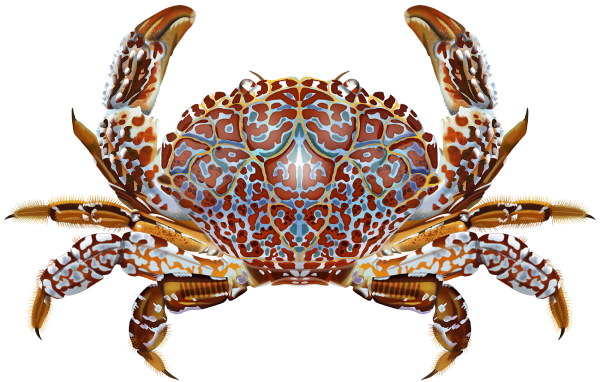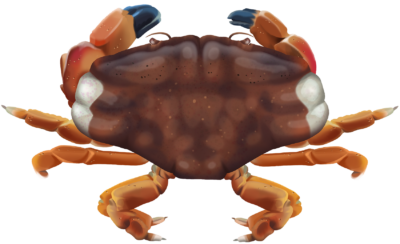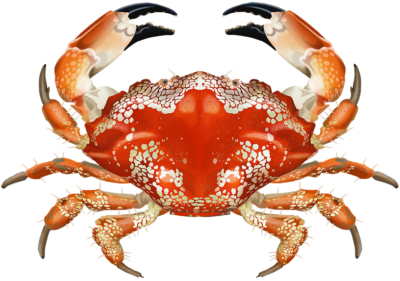Quick Facts
Distribution

Interesting Info
- The Toxic Reef Crab is primarily found in Western Australia, Queensland, and New South Wales. Its distribution is limited to these regions along the Australian coastline, inhabiting suitable rocky reef habitats in those areas.
- The Toxic Reef Crab has a unique appearance. It features a compact body covered in a hard exoskeleton, which is predominantly coloured in shades of greenish-brown or olive. The exoskeleton may also exhibit patterns or speckles, providing additional camouflage.
- One of the distinguishing characteristics of the Toxic Reef Crab is its large and powerful claws. These claws are used for defence, capturing prey, and asserting dominance.
- Their diet consists of a variety of small marine organisms. They feed on algae, small crustaceans, molluscs, detritus, and other organic matter found within their habitat.
- They have evolved excellent camouflage skills, allowing them to blend seamlessly with their rocky reef environments. This adaptation helps them avoid predation by blending into their surroundings.
- These crabs are primarily nocturnal, displaying heightened activity during the night. They tend to retreat to their hiding places during the day to minimize exposure to potential predators.
- Male Toxic Reef Crabs can be distinguished from females by their larger claw size. Males possess one significantly larger claw, which they employ for attracting mates and defending their territory.
- Contrary to its name, the Toxic Reef Crab does not possess venomous or toxic capabilities. It is potentially lethal due to the presence of the neurotoxins tetrodotoxin and saxitoxin in its flesh and shell. Poisoning only occurs from consumption of the crab.
- Breeding habits of the Toxic Reef Crab are influenced by seasonal changes. They typically engage in mating and reproduction during the warmer months, which generally occur between spring and summer in Australia.
- They have an estimated lifespan between 2 – 3 years.
Species Interaction
Aquarium, Snorkeling & Diving
Toxic Reef Crab are not commonly kept in aquariums, but due to their unique appearance, they can occasionally be found in established reef aquariums. Snorkelers and divers can observe the Toxic Reef Crab in the wild, particularly in rocky reef environments where they seek shelter and forage for food. However, their small size and excellent camouflage can make them challenging to spot without careful observation.
Scientific Classification
Kingdom: Animalia
Phylum: Arthropoda
Subphylum: Crustacea
Class: Malacostraca
Order: Decapoda
Family: Xanthidae
Genus: Zosimus
Species: Zosimus Aeneus
Conservation Status
In Australia, the conservation status of the Toxic Reef Crab is currently categorised as “Least Concern.” This means that their population is relatively stable and not at immediate risk of significant decline or extinction.
Toxic Reef Crab
As Aquarium Fish
Care Level: Moderate
Temperament: Peaceful
Diet: Omnivore
Reef Compatible: Yes
Minimum Tank Size: 30 gallons
Recreational Viewing
- Snorkeling & Scuba
Finding: Difficult
Temperament: Shy
Location: Inner Reef, Outer Reef, Caves, Lagoon
Danger: Poisonous





